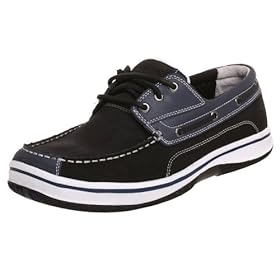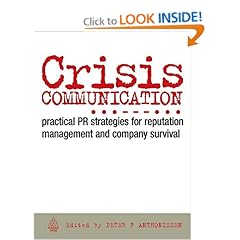Ok, I got lots of e-mails about my sushi after my tweet about it last night, so here goes:
I didn't start eating sushi until a few years ago; I wasn't a fish guy and I'm still not really an across the board fish guy -- I am a very picky sushi eater. The first time I was convinced to try raw ahi tuna, it was prepared by Wolfgang Puck with a light tempura fry on the outside, asparagus in the middle, and served over uni sauce; suffice to say I was hooked. It wasn't until a couple of years later when a waitress in a restaurant asked why I wasn't ordering rolls -- I responded that I hated the taste of seaweed and she suggested soy paper; hooked again.
One of the things that I love to do is cook (how else would I get to play with fire and sharp knives?) and I like to cook things that I like to eat. After spending lots of time in sushi restaurants and becoming friends with a couple of chef/owners of sushi restaurants, I have perfected some sushi dishes that I can make at home.
[This is going to wind up being a much longer post than I thought -- just warning you now]
I'm going to share with you what I've learned.
Basics:
- Sharp knife (you don't need a sushi knife, but you do need a knife with a good edge to cut the raw fish and rolls)
- Bamboo sushi rolling mat. Cover this with plastic wrap when you use it -- restaurants have to do this because it is nearly impossible to sanitize the roller once it gets rice and stuff in it; if they can't sanitize it, you probably get either.
- Good rice. I like Kokuho Rose brand, but get whatever you feel comfortable with -- find an Asian market and they'll have tons of choices.
- Soy sauce. If you make a lot of asian-style food, I recommend buying a small bottle at a regular grocery store and then getting the big jug from Costco or Sam's -- you can refill the small bottle from the big bottle and you'll save a fortune.
- Wasabi. Do not buy prepared wasabi, it has a low shelf life once opened, it loses potency quickly, and you're just paying someone else to mix water with wasabi powder. You can get wasabi powder from asian markets and mix the powder with water yourself -- the more dense the end product, the more potent.
- Rice vinegar. You can find this at grocery stores and asian markets.
- Ponzu sauce. Underutilized, in my opinion, this is a mix of very light soy sauce and ponzu juice, ponzu being a very intensely citric lemon. The resulting mix is a light, lemony sauce that goes well with sushi rolls and works well with other foods like dumplings. Readily available in asain markets, though I've seen it in grocery stores as well.
- Soy paper. I'm not giving instructions for seaweed because I don't make sushi with it. Soy paper is harder to find, even in asian markets, but worth making the effort; all asian markets carry large varieties of seaweed. I order my soy paper from these folks and I like how theirs is packaged because the packaging is resealable, which keeps the soy paper fresh almost indefinitely.
Sashimi:I really only eat ahi tuna raw, so that's what I'm going to delve into. You need really, really high quality fish to make sashimi. Most higher-end meat stores have a fish monger that will have sushi-grade ahi tuna. When you choose the fish, you are looking to have the blood line already removed -- ask to smell the fish and if it smells at all like fish, it's not good for sashimi. In Colorado I get my sushi-grade ahi from
Tony's Meats; in Southern California, I recommend
Sanata Monica Seafood. Make sashimi the same day you buy the fish and keep the fish refrigerated until you use it.
Once you've got the tuna steak home and in front of you, you want to trim any gristle on connective tissue that may be on the sides, aiming for trimming it to a square like you see in sushi restaurants. No need to throw away trimmings as I'll give you a use for those in a minute. Once you have your square, cut perpendicular to the grain at a slight angle, aiming for 1/2 inch slices. I like to serve the ahi sashimi with ponzu because I think it complements the fish.
If you want to be a little less traditional, which describes how I like to cook, season the tuna steak with soy sauce and rice vinegar for about a hour. Sear both sides quickly (like 30 seconds each side) in a very hot pan. Done right, you wind up with a flavorful crust and completely raw tuna inside. I like to serve this over greens with the
Benihana ginger dressing (if you make this, just put all the stuff in a food processor and save yourself a ton of prep time).
PokeEver notice how there's no waste in sushi restaurants? That's because they re-package the "scraps" as different dishes. One of my f

avorites is poke ("po-kay") and I actually will just make this when not making sashimi; it's especially good if you're using a lower grade ahi as there are powerful flavors that will cancel out any fishy flavors.
Just cut the ahi into small chunks, combine in a bowl with
sesame oil (little bit at a time because it has a very strong flavor), diced jalapeno pepper, and green onion. If you want to get more creative, put in some sauteed shallots and roast the green onion. When I've got them, I like to serve this on a bed of sliced avocado.
Rolls I'm going to go through how to make one of my favorite rolls, which is spicy tuna, cream cheese, and avocado. The process is essentially the same for whatever rolls you want to make.

Dice up a bunch of the ahi tuna that you didn't use for sashimi. Although some places serve their spicy tuna kind of chunky, I like doing a pretty small dice on it -- the small dice also allows you to remove chewy pieces of connective tissue. Note that you can use lower grade ahi because of the strong flavors and many restaurants use older tuna to make spicy tuna as the flavors will mask any potential fishy flavor. Once you have a good amount of diced tuna (how much depends on how many rolls you want to make), throw it in a bowl with some mayonnaise and
sriracha -- note that the mayo is just a binder, so you don't need a ton of it and the sriracha is the "spicy" in spicy tuna, so the more you use, the spicier it gets. If you want to make a little bit more unique flavor, you can throw in some diced scallion and taragon.
Rice is extremely important. I recommend soaking your rice for 30 minutes prior to using it, and once soaked, rinse it a few times to get the water to run more clear. Generally Kokuho Rose recommends 1.25 cups of water for each cup of rice; I actually do it in a 1:1 ratio, especially after the soak. If you're looking for a target amount of rice, make 2 cups -- that should be enough for a good amount of rolls. Follow the rest of the cooking instructions and once the rice is done, transfer it to a Pyrex pan. Make a rice coating solution (this amount of solution is for 2 cooked cups of rice) of 1/4 cup rice vinegar, 2 tablespoons sugar, and 1 teaspoon salt -- put all the ingredients in a sauce pan and cook over medium heat on the stove until the sugar is wholly dissolved. Pour the solution over the rice when its in the Pyrex and mix it around with a wooden spoon to ensure even coating.
Tezu is important in working with the rice while you're making sushi -- it's what keeps the rice pliable and keeps it from sticking to your hands. You've seen sushi chefs in restaurants constantly dip their hands in what looks like a bowl of water, right? That's actually Tezu, which is a 1:1 mix of rice vinegar and water -- make a bowl of that (1 cup of each is usually good), but be sure the bowl is big enough to dip your fingers in.
For the cream cheese you need to use a block of cream cheese, not the stuff in a tub. The cream cheese needs to be cold to cut into rectangles; if it's not cold enough, pop it in the freezer for a few minutes to stiffen it. Cut long rectangular strips that are slightly less long than the width of the soy paper.
You need strips of avocado that will easily fit within the roll. Please use a spoon to get the avocado flesh out of the shell and then make your cuts -- these are thin strips, not cubes.
I recommend rolling on a cutting board, but you can also do it on a counter if you wish. Grab a piece of soy paper and lay it on top of your mat. Put some Tezu on your fingers, grab some rice, and spread it in an even layer across the soy paper, leaving a small strip uncoated at the far end of the soy paper. You'll have to practice to figure out the correct amount of rice, put make sure you have an even coating (keep applying Tezu as needed to keep the rice from sticking to your fingers -- the Tezu will not damage anything). Note that at this point you could flip the soy paper over make a roll with the rice on the outside.
Once the soy paper is coated, put your filling in roughly the middle of the soy paper, staying away from the edges. For our roll, the spicy tuna goes down first, then a strip of cream cheese, then the avacado. Roll the bamboo mat from the edge closest to you, applying even pressure; if you do this correctly, you will wind up with a mostly rolled roll. Use the close edge of the mat again to complete the roll so that you get a full completion; if the edge that was left uncovered with rice doesn't stick, put some Tezu on it and press the roller over it again.
Slice the roll in half (your knife needs to be sharp for this -- you can pop the roll into the fridge for a few minutes to get the soy paper to stiffen up if you're having problems with it tearing) and then slice each half into thirds; you need 6 pieces out of a roll as it is bad luck to cut it into 4 pieces. I like to put a little piece of avocado on top of each piece of roll, but that's just me. Serve with small bowls of soy sauce and wasabi.
 Chances are good that you are scared. Scared about your job, scared about the value of your home, scared about your investments. It's ok to be scared, but it's very worth turning scared into an opportunity. I would argue that scared is the best opportunity, especially as it relates to your job.
Chances are good that you are scared. Scared about your job, scared about the value of your home, scared about your investments. It's ok to be scared, but it's very worth turning scared into an opportunity. I would argue that scared is the best opportunity, especially as it relates to your job.























